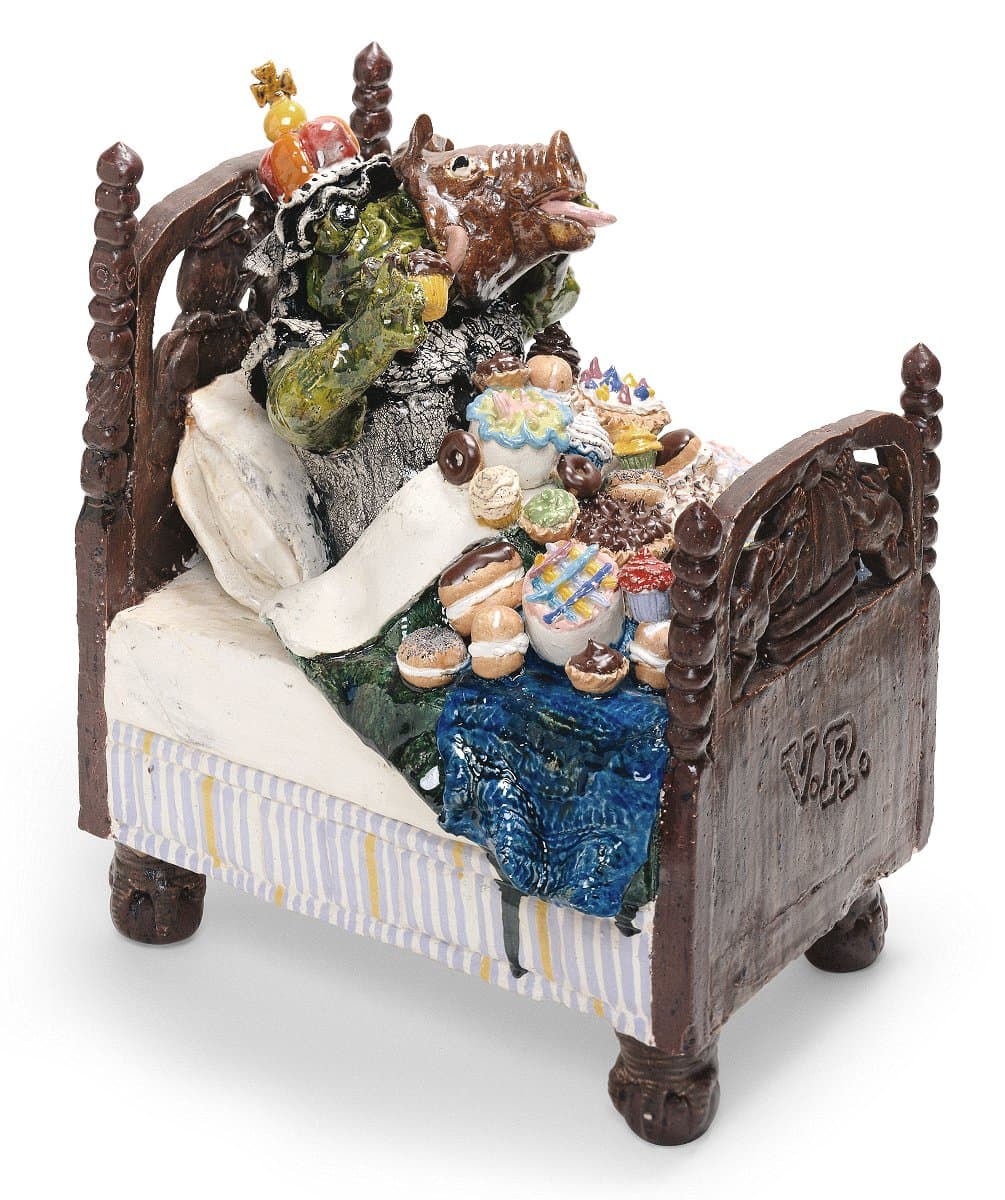

David Gilhooly
Learn moreVictoria's royal snack 1978
Purchased 1978
More detail | PermalinkDavid Gilhooly was a leading figure in the San Francisco Bay area Funk movement of the mid 1960s and instrumental in establishing ceramics as a significant medium in contemporary art of the period. The son of a veterinarian, he initially enrolled in biology at the University of California, Davis, before switching to anthropology, and finally ceramics. These experiences informed his whimsical and irreverent animal ceramics. Gilhooly challenged the seriousness of the art world, parodying ancient civilisations, religion, politics and culture through the absurd imagery of his alternative universe known as FrogWorld. His work investigates notions of nationalism and the hero worship of historic figures though monuments and sculpture.
If you make things out of clay, and if you are interested in the history of clay, art, or even just the world, it is hard to escape doing a bust of a hero. You’re worshipping him and, at the same time, controlling him by cutting off at the chest and mounting him on a base.[i]
These works reflect history while also seeking to reimagine it by reworking it in clay.
As well as contemporary figures like Chinese Communist leader Mao Tse Tung, Gilhooly explored ancient Egypt, Greece and Rome, and the early Christian church, covering both historical and religious ground at once. Queen Victoria featured significantly after his move to Canada in 1969, not only as a frog bust, but also in more playful works such as Victoria’s royal snack 1978, which sees the British monarch in bed surrounded by an assortment of food.
In both Two toad sloth 1978 and Victoria’s royal snack, Gilhooly fills brass beds with slovenly frogs and piles of food, another key theme from the early 1970s. Not unlike humans, frogs are gluttonous and risk overeating. By combining the two themes Gilhooly examines food as pleasure rather than simply a means of survival, a point reinforced by the quantity of food he includes in his sculptures.[ii]
Simeran Maxwell
[i] David Gilhooly, quoted in Kenneth Baker, David Gilhooly, John Natsoulas Press, Davis, 1992, p 29.
[ii] See also Laura Webster and Robert Bell, ‘David Gilhooly’, unpublished manuscript, NGA, 2002; Lucina Ward, ‘Art Current (1972–1984)’, in Pauline Green (ed), Building the Collection, National Gallery of Australia, Canberra, 2003, pp 140–63, at pp 156, 158; and Australian National Gallery Association News, May/June 1992, p 15.

